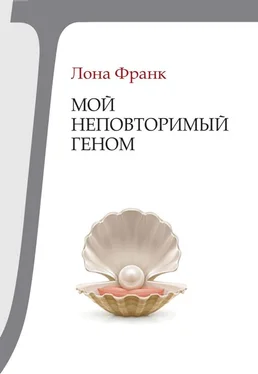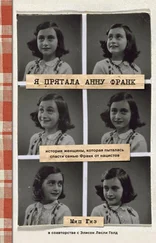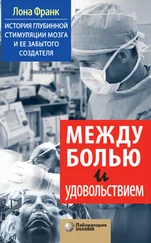Plomin, Robert, et al. 2001. Why Are Children in the Same Family So Different? Nonshared Environment a Decade Later. Canadian Journal of Psychiatry 46: 225-33.
Plomin, Robert, and Denise Daniels. 1987. Why Are Children from the Same Family So Different from One Another? Behavioral and Brain Sciences 10: 1-60.
Nettle, Daniel. 2007. Personality , p. 216.
Quoted in Holden, Constance. 2008. Parsing the Genetics of Behavior. Science 322(5903): 892-5.
Seed. 2009. Revolutionary Minds: The Re-envisionaries. http:// revminds.seedmagazine.com/revminds/member/heejung_kim
Kim, Heejung S., et al. 2010. Culture, Serotonin Receptor Polymorphism and Locus of Attention. Social, Affective and Cognitive Neuroscience 5(2–3): 212-8.
Shalev, Idan, et al. 2009. BDNF Val66Met Polymorphism Is Associated with HPA Axis Reactivity to Psychological Stress Characterized by Genotype and Gender Interactions. Psychoneuroendocrinology 34(3): 382-8.
Kalbitzer, Jan, et al. 2009. The Personality Trait Openness Is Related to Cerebral 5-HTT Levels. Neuroimage 45(2): 280-5.
See Aron, Elaine N. 1997. The Highly Sensitive Person: How to Thrive When the World Overwhelms Y ou. New Y ork: Broadway Books.
IMAGEN Project. 2007. The IMAGEN Study Has Started at the End of December 2007. IMAGEN Website press release (11 December). http://www.imagen-europe.com/en/imagen-study.php
Belsky, Jay, and Michael Pluess. 2009. Beyond Diathesis Stress: Differential Susceptibility to Environmental Influences. Psychological Bulletin 135(6): 885–908.
Boyce, W. Thomas, and Bruce J. Ellis. 2005. Biological Sensitivity to Context: An Evolutionary-developmental Theory of the Origins and Functions of Stress Reactivity. Developmental Psychopathology 17(2): 271–301.
Kinnally, Erin L., et al. 2009. Parental Care Moderates the Influence of MAOA-uVNTR Genotype and Childhood Stressors on Trait Impulsivity and Aggression in Adult Women. Psychiatric Genetics 19(3): 126-33.
Pinker, Steven. 2009. My Genome, My Self. New Y ork Times Magazine (7 January).
Bazelon, Emily. 2006. A Question of Resilience. New Y ork Times Magazine (April 30).
Schardt, Dina M. 2010. Volition Diminishes Genetically Mediated Amygdala Hyperreactivity. Neuroimage 53: 943-51.
Fraga, Mario F., et al. 2005. Epigenetic Differences Arise during the Lifetime of Monozygotic Twins. Proceedings of the National Academy of Sciences 102(30): 10604-9.
Weaver, Ian C. G., et al. 2004. Epigenetic Programming by Maternal Behavior. Nature Neuroscience 7: 847-54.
McGowan, Patrick O., et al. 2009. Epigenetic Regulation of the Glucocorticoid Receptor in Human Brain Associates with Childhood Abuse. Nature Neuroscience 12(3): 342-8.
Oberlander, Tim F., et al. 2008. Prenatal Exposure to Maternal Depression, Neonatal Methylation of Human Glucocorticoid Receptor Gene (NR3C1) and Infant Cortisol Stress Responses. Epigenetics 3(2): 97-106.
PricewaterhouseCoopers. 2009. Pharma 2020: Challenging Business Models (April). http://www.pwc.com/gx/en/pharma-life-sciences/pharma-2020-business-models
Quoted in Jaroff, Leon J. 1989. The Gene Hunt. Time (20 March): 62-7.
Wedekind, Claus, et al. 1995. MHC-dependent Preferences in Humans. Proceedings of the Royal Society London B 260: 245-9.
Ober, Carole, et al. 1997. HLA and Mate Choice in Humans. American Journal of Human Genetics 61(3): 497–504.
Chaix, Rapha6lle, et al. 2008. Is Mate Choice in Humans MHC-dependent? PLoS Genetics 4(9): 1–5.
Chaix, Rapha6lle, et al. 2008. Is Mate Choice in Humans MCH-dependent? PLoS Genetics 4(9): e1000184. doi:10.1371/journal. pgen.1000184
Ihara, Y asuo, et al. 2000. HLA and Human Mate cChoice: Tests on Japanese Couples. Anthropological Science 108: 199–214.
Havlicek, Jan, and S. Craig Roberts. 2009. MHC-correlated Mate Choice in Humans: A Review. Psychoneuroendocrinology 34(4): 497–512.
Garver-Apgar, Christine, et al. 2006. MHC Alleles, Sexual Re-sponsivity, and Unfaithfulness in Romantic Couples. Psychological Sciences 17: 830-5.
Walum, Hasse, et al. 2008. Genetic Variation in the Vasopressin Receptor 1A Gene ( AVPR1A ) Associates with Pair-bonding Behavior in Humans. PNAS — Proceedings of the National Academy of Sciences 105(37): 14153-6.
Risch, Neil, et al. 2009. Ancestry-related Assortative Mating in Latino Populations. Genome Biology 10(11): R132.
Quoted in Aldous, Peter. 2009. Guapa, It’s Y our Genetic Ancestry I Love. New Scientist (20 November).
Parker, Randall. 2010. Counsyl Genetic Tests for Prospective Parents. FuturePundit Blog (2 February). http://www.futurepundit. com/archives/006920.html
Leroi, Armand M. 2006. The Future of Neo-eugenics. EMBO Reports 7(12): 1184-7.
Marchione, Marilynn. 2010. Gene Testing Spurs Decline of Some Dire Diseases. Associated Press (19 February).
Pollack, Andrew. 2010. Firm Brings Gene Test to Masses. New Y ork Times (28 January).
Quoted in Counsyl. 2010. Counsyl Test to Prevent Diseases Like Those in ‘Extraordinary Measures’ Now at 100+ Medical Centers. Press release (22 January).
https://www.counsyl.com/pr/counsyl-test-to-prevent-diseas-es-like-those-in-extraordinary-measures-now-at-100-medical-centers
Lohmueller, Kirk E., et al. 2008. Proportionally More Deleterious Genetic Variation in European than in African Populations. Nature 451: 994-7.
London Sperm Bank. 2011. Looking for Donated Sperm? http://www.londonspermbank.com/looking_for_donated_sperm.html
Goldstein, David B. 2010. Personalized Medicine. Nature 463: 26–32.
Rask Larsen, Julie. 2008. Dansk abortlov er forsldet og krsn-kende (Danish Abortion Law Is Outdated and Offensive). Politiken (25 August). http://politiken.dk/debat/kroniker/ECE556702/dansk-abortlov-er-foraeldet-og-kraenkende
Appel, Jacob M. 2009. Mandatory Genetic Testing Isn’t Eugenics, It’s Smart Science. Opposing Views (4 March). http://www.opposingviews.com/i/mandatory-genetic-testing-isn-t-eugenics-it-s-smart-science
Читать дальше












